Non-native and Native Shrubs of Mississippi
Mississippi is home to a diverse array of beautiful, native plants—trees like white oak (Quercus alba) and American elm (Ulmus americana), shrubs like American beautyberry (Callicarpa americana) and Elliott’s huckleberry (Vaccinium elliottii), and woody vines like Carolina jessamine (Gelsemium sempervirens) and muscadine (Vitis rotundifolia). Here, you will find four common non-native, invasive shrub species to avoid and the native shrub species that you should consider planting instead. This is not an exhaustive list; there are many other options.
Species to Avoid
Chinese privet (Ligustrum sinense)

- Introduced from Asia in 1852.
- Grows up to 15 feet tall and forms hedgerows that aggressively overtake native plants.
- Flowers smell strongly like rotten hay.
Trifoliate orange (Poncirus trifoliata)
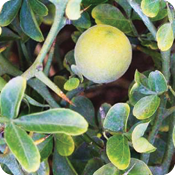
- Introduced from Asia in the 1800s.
- Planted for hedgerows.
- Develops long, green thorns and lemon-like fruits that are sour and full of seeds.
- Creates an impenetrable thicket.
Autumn and thorny olive (Elaeagnus spp.)
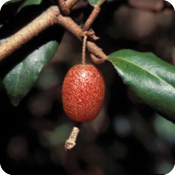
- Introduced from Asia.
- Leaves and fruits are covered in silver scales; twigs are vine-like.
- Produces dense thickets that disrupt wildlife and suppress other plant species.
Sacred bamboo (Nandina domestica)
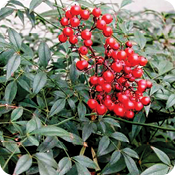
- Introduced from Asia in the 1800s.
- Some varieties get bright red leaves in fall.
- All parts of the plant contain cyanide and are toxic.
- Creates dense thickets.
Species to Use
Southern wax myrtle (Myrica cerifera)
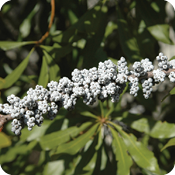
- Leaves and fruit create a spicy bayberry smell when crushed.
- Attracts birds and poll inators.
- Flammable; do not plant directly next to your house.
Strawberry bush (Euonymus americanus)
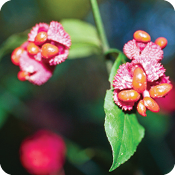
- Glossy leaves turn red in the fall.
- Bright pink-red fruit resemble strawberries and have orange seeds that are edible by wildlife.
- Grows up to 12 feet tall; prefers partial shade in moist soil.
Northern spicebush (Lindera benzoin)
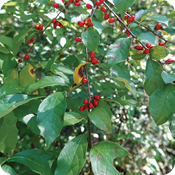
- Produces clusters of tiny, yellow flowers and red fruit that smell like allspice and lemon.
- Grows up to 15 feet; prefers a partly shaded and moist environment.
- Attracts birds and butterflies.
Yaupon (Ilex vomitoria)
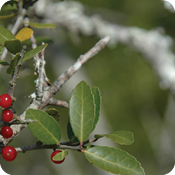
- Shrub or small tree (up to 35 feet).
- Produces small, green leaves that stay on through winter.
- Red berries attract birds.
- Tolerates sun/shade, drought, and poor soil drainage.
Bonus!
Three invasive woody vine species and their alter(natives).
Species to Avoid
Kudzu (Pueraria montana)
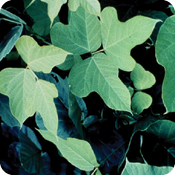
- Introduced from Japan in 1876.
- Known as “the vine that ate the south.”
- Supports a non-native insect, the kudzu bug, a soybean pest.
Japanese honeysuckle (Lonicera japonica)
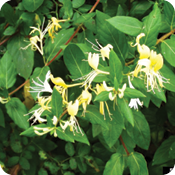
- Introduced from Japan in the 1800s.
- Sweet-smelling flowers.
- Spreads through seed and rootstalks and quickly smothers plants.
Chinese wisteria (Wisteria sinensis)
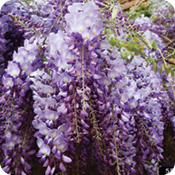
- Introduced from Asia in the 1800s.
- Heavy vine with purple flower clusters before spring leaf-out.
- Smothers plants and damages buildings if not pruned often.
Species to Use
Crossvine (Bignonia capreolata)
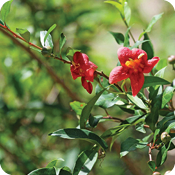
- Produces lustrous, green leaves and yellow-red, trumpet-shaped flowers that smell like chocolate.
- Grows up to 50 feet in sun or shade.
- Attracts hummingbirds.
Trumpet honeysuckle (Lonicera sempervirens)
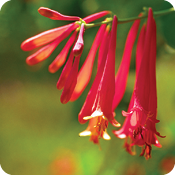
- Produces showy, red flowers that are not overly fragrant.
- Grows up to 20 feet in sun or shade.
- Attracts hummingbirds and butterflies.
American wisteria (Wisteria frutescens)
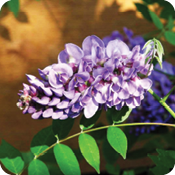
- Produces showy, purple flowers after leaf-out; some varieties are musky, and others are sweet-smelling.
- Grows up to 30 feet in sun or shade.
- Attracts butterflies.
Tips for Planting a Native Shrub in Your Yard
- Dig a hole 2× the width of the roots; loosen pot-bound roots.
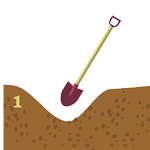
- Do not bend or force the roots; fill soil in around the roots.

- Fill in the hole so that the root collar is at or just above the soil.
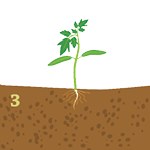
- Saturate the soil around the roots with water.
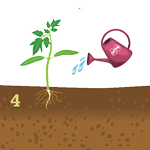
Funding was provided by the Mississippi Forestry Commission Urban and Community Forestry Grant Program, Grant Award 21-DG-11083128-001 to the Mississippi State University Department of Forestry.
Publication 4018 (07-24)
By Ashley Schulz, PhD, Assistant Professor, Joshua J. Granger, PhD, Assistant Professor, A. Brady Self, PhD, Associate Extension Professor, and Drew Williams, PhD Student, Forestry.
Copyright 2024 by Mississippi State University. All rights reserved. This publication may be copied and distributed without alteration for nonprofit educational purposes provided that credit is given to the Mississippi State University Extension Service.
The Mississippi State University Extension Service is working to ensure all web content is accessible to all users. If you need assistance accessing any of our content, please email the webteam or call 662-325-2262.




